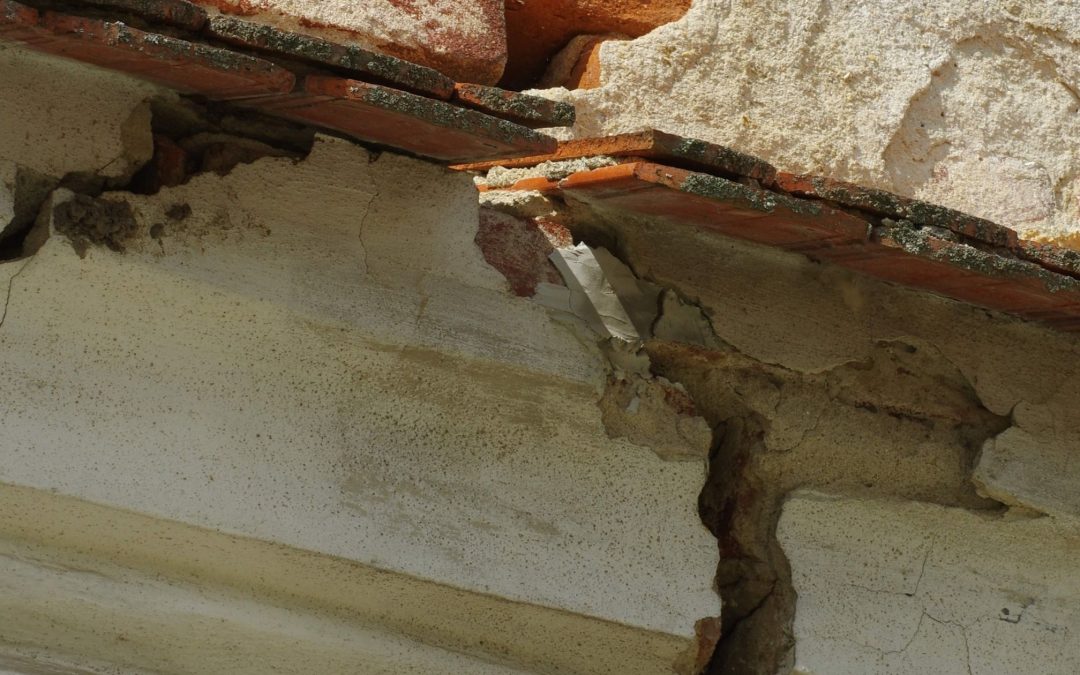Cracks in walls are a common occurrence in residential homes. We understand they can be worrisome for you, especially after making such a significant investment. If you’ve heard stories concerning the pricey costs involved with foundation repairs, you’re not alone, but we’re here to help.
This article will help you understand what causes these cracks and whether or not they are putting your home in jeopardy. Then you’ll know when you need to contact a structural engineer for the cracks in the walls of your home.
3 Main Types of Walls Cracks
Cracks in walls can occur for several reasons. The cause of these cracks determines how severe the damage is to your home. Below are the main types of cracks found in residential structures:
Cracks in the foundation
Cracks in the foundation walls can be horizontal, diagonal, or vertical.
Horizontal cracks found in soil retaining foundation walls signify that the wall might have started to deflect out of the plane. Wall defection is a cause for concern because the current soil retaining foundation wall may be overloaded, leading to larger cracks and eventually wall failure.
This type of crack will usually occur from poor drainage. As the excessive water makes its way to the wall, it adds hydrostatic pressure to it, thus, overloading it. Another reason this crack can occur is because of the construction of the wall itself. For example, the wall might not be up to building code standards, or it’s inherently undersized or under reinforced to retain soil loads.
Diagonal cracks are typically known as stair-step cracks in CMU walls. They are a sign of differential settlement which means that one side of the wall is settling down while the rest of the wall isn’t settling.
The reasons for these settlements can vary. One reason is poor drainage, which can lower the soil’s ability to bear loads. Another explanation could be vertical point loads acting on the foundation. The design must account for these loads; if not, it can overload the footing and cause it to settle.
Vertical cracks, if small in width (1/16″ or smaller) are typically shrinkage cracks which stem from the curing of concrete which shrinks as the moisture in the original concrete mix evaporates.
These cracks are not usually a severe structural concern. However, if the cracks continue to expand in size, you will need to contact a structural engineer to assess the situation.
Cracks on flat concrete slabs (i.e., garage)
Cracks could also be present on flat concrete slabs such as a garage floors. Typically, the cracks you might observe in concrete slabs are shrinkage cracks. They occur if no control joints are present in the slab.
Typically, control joints are saw cut by the builder in a square or rectangular pattern. This pattern allows the concrete joints to crack in the predetermined locations as the slab dries and shrinks, preventing random breaks from appearing on the slab.
Contact a structural engineer to assess the situation if the cracks you see in the slab:
- Are wider than 1/16″
- Keep expanding
- Are present in a radial fashion
The above signs are indicators that other issues might be at play, and contacting a professional is the wisest decision you can make at that point.
Cracks in sheetrock and finished materials
You might notice cracks in the sheetrock or finished materials on the main and upper levels of the residence. Cracks in sheetrock and finished materials are relatively common. They are typically present around door or window openings as a diagonal crack in the top right or left of the space. This type of damage could be signs of settlements of the home, and you’ll usually see additional cracks in the foundation.
If you see cracks that are strictly vertical or horizontal and are small in width, those are signs of expansion and shrinking of the building materials. In those situations, it can vary depending on the moisture level and the temperatures. Monitor the cracks, and as long as they do not expand in size, they might not be structural in nature.
When to Contact a Structural Engineer
Cracks can be tricky, and you can’t assess the seriousness based on their size alone. A professional structural engineer must evaluate the complete residence to gather all evidence to make an educated decision based on their experience and observation. The engineer will look at your house as a whole to tell the complete story and hopefully locate the root cause of the problem.
Contact Areté Engineers for a Structural Assessment
Our team will perform a structural assessment to ensure your home meets all applicable building codes related to structural integrity. Contact us today to get started.

